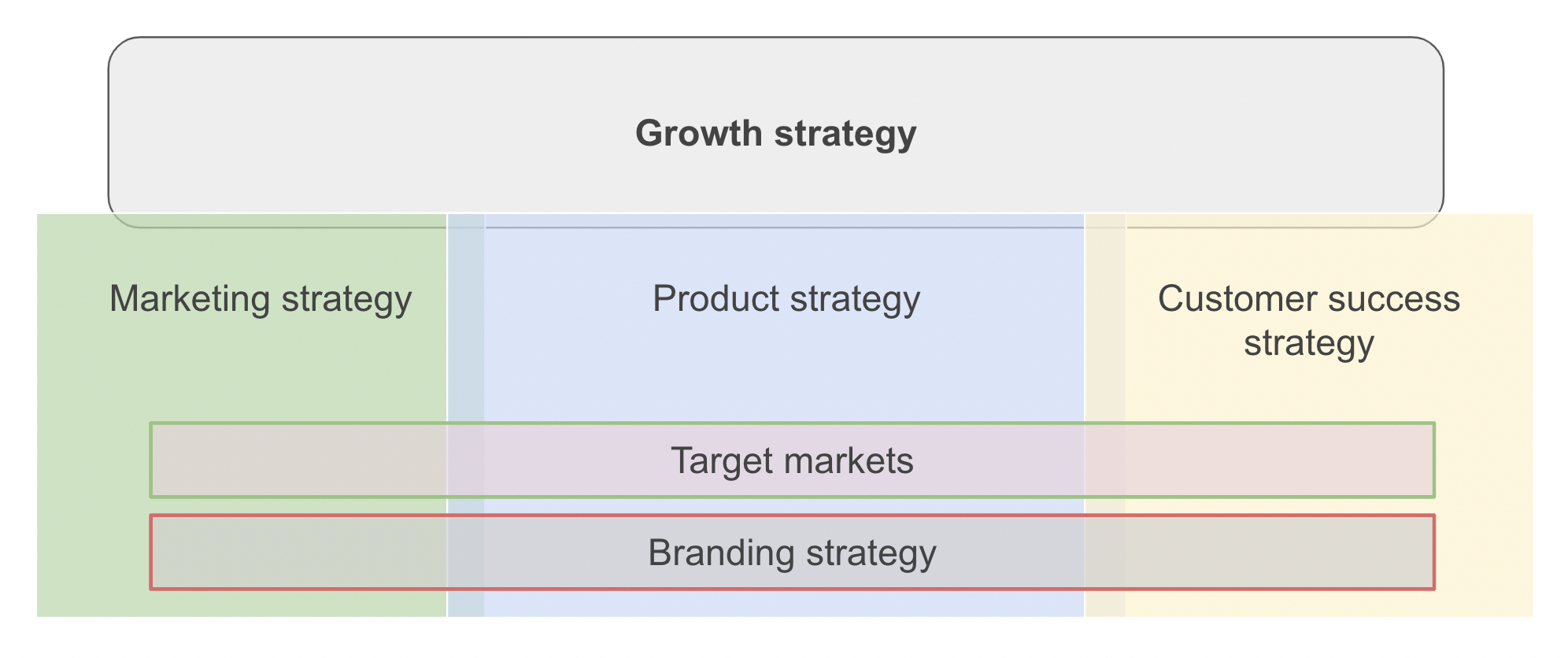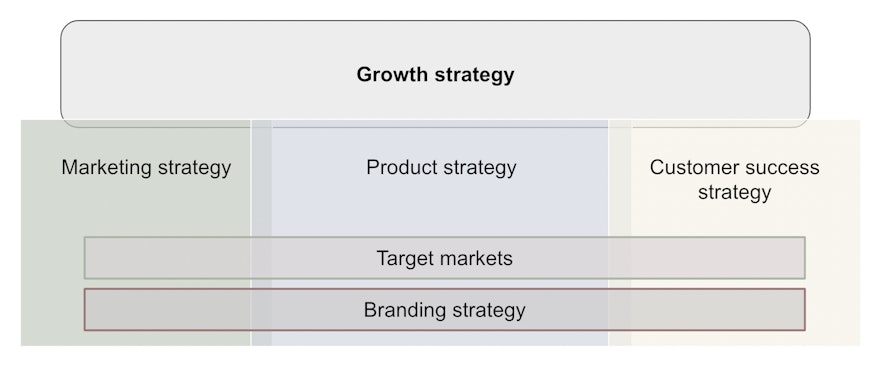tl;dr
A growth strategy is a sum of functional strategies: Overall growth strategy must provide guidance to each function for its own strategy
Knowing the growth hypotheses and assumptions is winning half the battle: When teams clearly understand the key growth assumptions, they can design the right experiments and facilitate data-driven decision-making as opposed to simply relying on intuition or prior knowledge
Bottom-up thinking must converge with the overall growth strategy: Each team's KPIs should easily roll up to the overall growth strategy
“If you want to go fast, go alone; but if you want to go far, go together.” We have all come across and probably used this well-known proverb in business. Most often, it surfaces in cross-functional contexts with teams like product management, growth, or strategy. While this (or similar) proverb may help provide a guiding principle to teams, the key for a growth executive is whether teams share a common understanding of “speed”, “distance”, and “going together”. This is critical for anyone (a product management, growth, or marketing executive) who owns growth KPIs.
Recently, we worked on a growth strategy with high-caliber teams at a fast-growing EU-based company with a strong management team. The company had well-defined short and long term goals: In 5 years -- grow the user base by 10X, revenue by 30X, and achieve profitability (become cash flow positive), etc. These goals were required to be translated into “what paths or choices” (growth strategy) and “how” (execution/OKRs) at the functional level (marketing, branding, product management, CRM, sales, etc.) This is where things became more challenging. The high-level growth strategy (which path to take) was somewhat fuzzy for the functional leaders. This fuzziness was amplified to disconnected and subjective goals that were hard to measure, loosely understood the direction of a team (say, performance marketing), and several other initiatives with less understood or missing business impact.
Hence, we applied these three principles to address these challenges.
1. A growth strategy is a sum of functional strategies

A strategy is simply the choices we make. There are multiple ways the company can grow the SaaS revenue by 30X. For example, one choice is to offer 1-2 core products and acquire millions of additional users who want to use and pay for the core products.
Another choice is to launch a new product every year (or more frequently) and have the existing users use and pay for the new products. In this case, the Chief Growth Officer (CGO) was responsible for making this choice. She was also responsible to define “why”, i.e., the hypotheses and assumptions of the underlying strategy. The hypotheses and assumptions must be identified in collaboration with other functions like product management, customer success, etc. This ensures that with each growth hypothesis and assumption, other teams like marketing, product management, customer success, etc. are able to build their own functional strategy along with stating the underlying hypotheses and assumptions that will directly support the overall growth strategy. For example, if the growth strategy is to monetize existing users through new product launches, product management needs to build a strategy to continuously launch new products. Similarly, customer success (or CRM team) must have increased the retention revenue as part of their strategy. An aggregate of each team’s or function’s strategy is the growth strategy.
2. Knowing the growth hypotheses and assumptions is winning half the battle
Largely, managers across industries have well understood and adopted a growth mindset of conducting experiments and continuous learning to find ways to grow. For this reason, when the underlying hypotheses and assumptions are known, the teams know what to experiment with to validate or invalidate an assumption. In our recent work, one of the overall growth hypotheses over the next 5 years looked like this:

In the growth scenario above, each team needs to understand the hypotheses and assumptions, some of which were:
Branding: The core customer segment must love our brand. They will buy and pay for everything we offer
Marketing: Scale acquisition to 20M users at a 25% conversion rate (CVR). If the CVR changes to 20%, the acquisition goal must increase to 25M. Unlock new segments (Adjacent 1, Adjacent 2, and so on...) collaboratively with product management and other teams
Product management: Launch new products (X2, X3, and so on...) to scale revenue. Maintain competitiveness and pricing differentiation of the current product. If the current product price competitiveness drops, some other strategy must make up for the gap.
Customer success (CRM): Identify core segments and sell more products to increase both retention number and revenue
And so on…
After having a good understanding of the assumptions, a talented manager can apply her thinking and skills to support the growth strategy.
3. Bottom-up thinking must converge with the overall growth strategy
When the rubber hits the road, the long-term goals and objectives are put into annual and quarterly objectives. Each team then applies either an OKR or a similar process to execute their strategy. Each manager prioritizing their key results must clearly support one of the long-term goals. In the customer example above, we implemented a key change: a cross-functional view of the OKRs that tested the key growth assumptions.
Product management set up experiments for new MVPs to identify the best product idea and new product launches
Customer success tested retention tactics for the new MVPs
Strategy and ops teams tested the premium pricing options for the current product (to maintain the average price in the market)
Growth PMs conducted experiments on user attributes of the potential core segments and the scalability of the core segments
… and so on. This process ensured that the primary goals were not getting lost in the details. As an intuition or hypothesis was proved or disproved, the interconnected strategies can be updated. We believe in elevating mutual thinking and helping the teams achieve it. With direct correlations across multiple teams and their learning, people at all levels (from C-level up to managers) were able to connect the dots across the bottom-up strategies to support the overall growth strategy.
In this example, we not only found ways for the teams to leverage a unified notion of speed and distance but also enhanced the application of the proverb to: “Regardless of whether you want to go fast or you want to go far, you must go together.”
